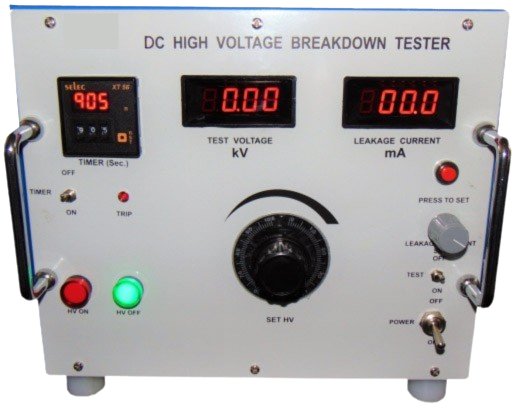Ensuring Product Safety With Advanced Home Appliance Testing Instruments As Per IS 302

In a technology-based world, home appliances are now a staple in our everyday lives. Appliances such as refrigerators, washing machines, electric irons and mixers all bring comfort, convenience and efficiency into our homes. However, with ease of use and growing reliance on electricity comes serious safety risks when appliances fail. A single fault in design or manufacturing can cause electrical hazards, shorts, and fires. To minimize risks, manufacturers must ensure their products are designed and tested to meet strict safety standards through rigorous testing and certification standards. This is where home appliance testing instruments come in to support consumer safety and reliability.
Understanding the Importance of Safety Compliance
The Bureau of Indian Standards (BIS) has established the IS 302 standard to ensure that all electrical appliances sold in India meet strict safety and performance requirements. IS 302 outlines specific parameters, testing procedures, and acceptance criteria to evaluate the electrical, mechanical, and thermal safety of appliances. Compliance with this standard is not just a regulatory formality—it represents a manufacturer’s commitment to producing quality products that safeguard users from potential hazards.
Testing appliances according to IS 302 standards involves a comprehensive assessment of insulation resistance, leakage current, high-voltage endurance, temperature rise, and dielectric strength. These parameters confirm that appliances operate safely under normal and abnormal conditions, ensuring users are protected from electrical shocks or overheating issues.
The Role of Modern Testing Instruments
Technological advancements have transformed the way appliances are tested. Modern testing instruments are designed with high precision, automation, and digital interfaces to ensure accuracy and repeatability. These instruments help manufacturers detect potential faults during early stages of production, thereby reducing product recalls and warranty claims.
Key instruments include insulation resistance testers, leakage current testers, temperature rise testers, high-voltage testers, and endurance testers. Together, they form a complete testing setup capable of validating every critical aspect of an appliance’s performance. In addition, automated data logging systems allow for real-time monitoring and digital record-keeping, which streamlines compliance documentation for audits and certifications.
Benefits of Using Reliable Testing Instruments
Using advanced home appliance testing systems offers multiple benefits:
Improved Product Quality: Consistent testing ensures that every batch of appliances meets the same high-quality standards.
Regulatory Compliance: Adherence to IS 302 and other relevant standards prevents legal penalties or product bans.
Enhanced Brand Reputation: Consumers prefer trusted brands that prioritize safety, resulting in long-term loyalty.
Operational Efficiency: Automation reduces manual errors, increases throughput, and saves testing time.
Cost Savings: Early detection of design flaws or safety issues minimizes rework costs and product returns.
Testing Parameters Covered Under IS 302
The IS 302 standard is comprehensive, covering numerous tests for assessing different safety aspects of home appliances. Some of the major testing parameters include:
Dielectric Strength Test: Ensures insulation materials can withstand high voltages without breakdown.
Leakage Current Test: Verifies that current leakage is within safe limits to prevent electric shock.
Temperature Rise Test: Evaluates whether the appliance remains within permissible temperature limits during operation.
Insulation Resistance Test: Confirms that insulation quality remains intact under various operating conditions.
Endurance and Durability Test: Checks the mechanical and electrical durability of switches, motors, and other components.
Each test serves a specific safety purpose and collectively ensures that the appliance is both safe and durable.
Automation and Digital Advancements
In the era of Industry 4.0, automation has significantly improved testing precision and speed. Modern testing setups are integrated with programmable logic controllers (PLCs) and computer-based control systems. These setups can automatically execute test sequences, analyze results, and generate compliance reports.
Additionally, cloud-based data management systems allow manufacturers to access test results remotely and maintain centralized records for multiple production units. This not only supports traceability but also simplifies audits by certification bodies. Digital integration ensures consistency, eliminates human errors, and accelerates time-to-market for new appliances.
Importance for Manufacturers and Consumers
For manufacturers, testing as per IS 302 is an assurance that their appliances will perform safely under all expected conditions. It helps them build credibility in the market and comply with government regulations. For consumers, it provides peace of mind knowing that their household devices are certified for safety and quality.
In a competitive market, safety certification can even become a differentiator. Brands that invest in advanced testing infrastructure demonstrate responsibility and technical excellence—key attributes valued by discerning customers and international partners alike.
Ensuring Product Safety Through Standardization
Standardization bridges the gap between innovation and safety. While manufacturers continuously introduce smarter, more energy-efficient appliances, testing standards like IS 302 ensure that safety remains uncompromised. This balance between innovation and regulation allows for the sustainable growth of the electrical appliance industry.
Moreover, as the global demand for Indian-manufactured appliances grows, compliance with IS 302 facilitates smoother export approvals, since it aligns closely with many international safety norms. Thus, adopting an advanced testing infrastructure not only ensures domestic safety compliance but also strengthens international competitiveness.
Conclusion
In conclusion, the reliability and safety of household electrical appliances depend heavily on rigorous testing and compliance with established standards. The use of home appliance testing instruments as per IS 302 enables manufacturers to maintain high safety benchmarks, prevent hazards, and deliver trustworthy products to consumers. As technology continues to evolve, embracing modern, automated, and precise testing solutions will remain essential to ensuring safety, efficiency, and long-term customer satisfaction.